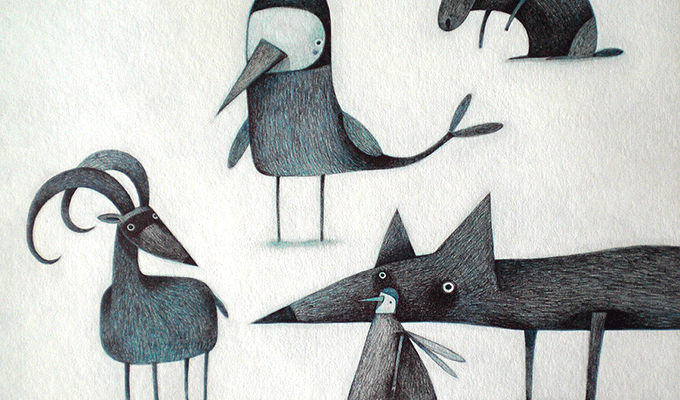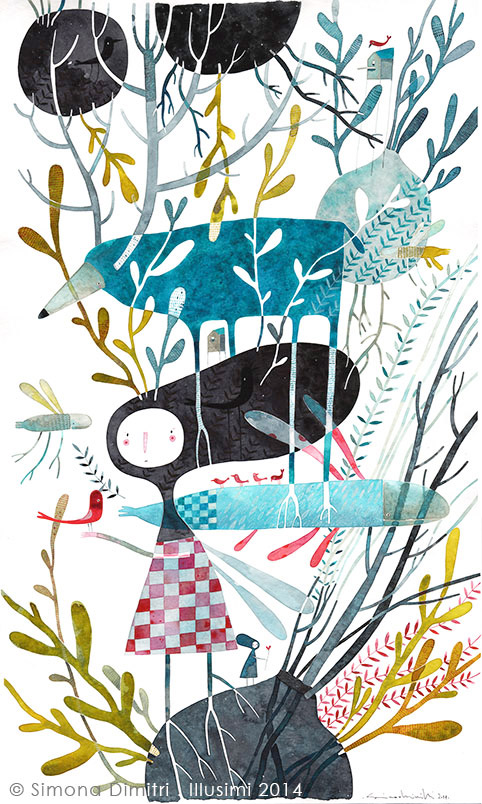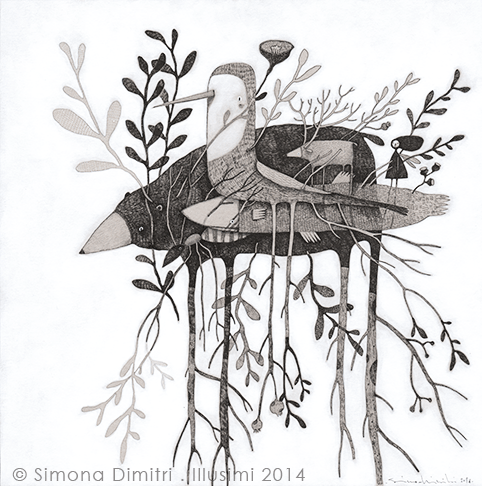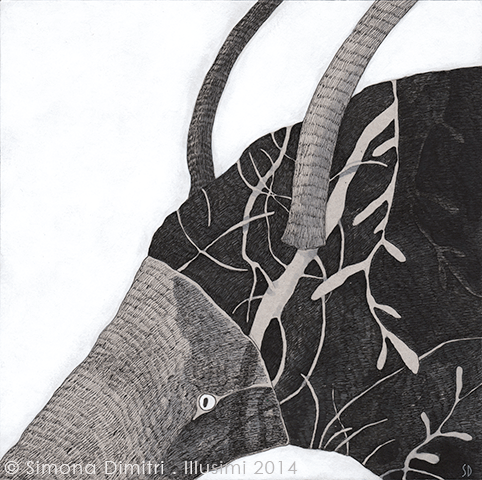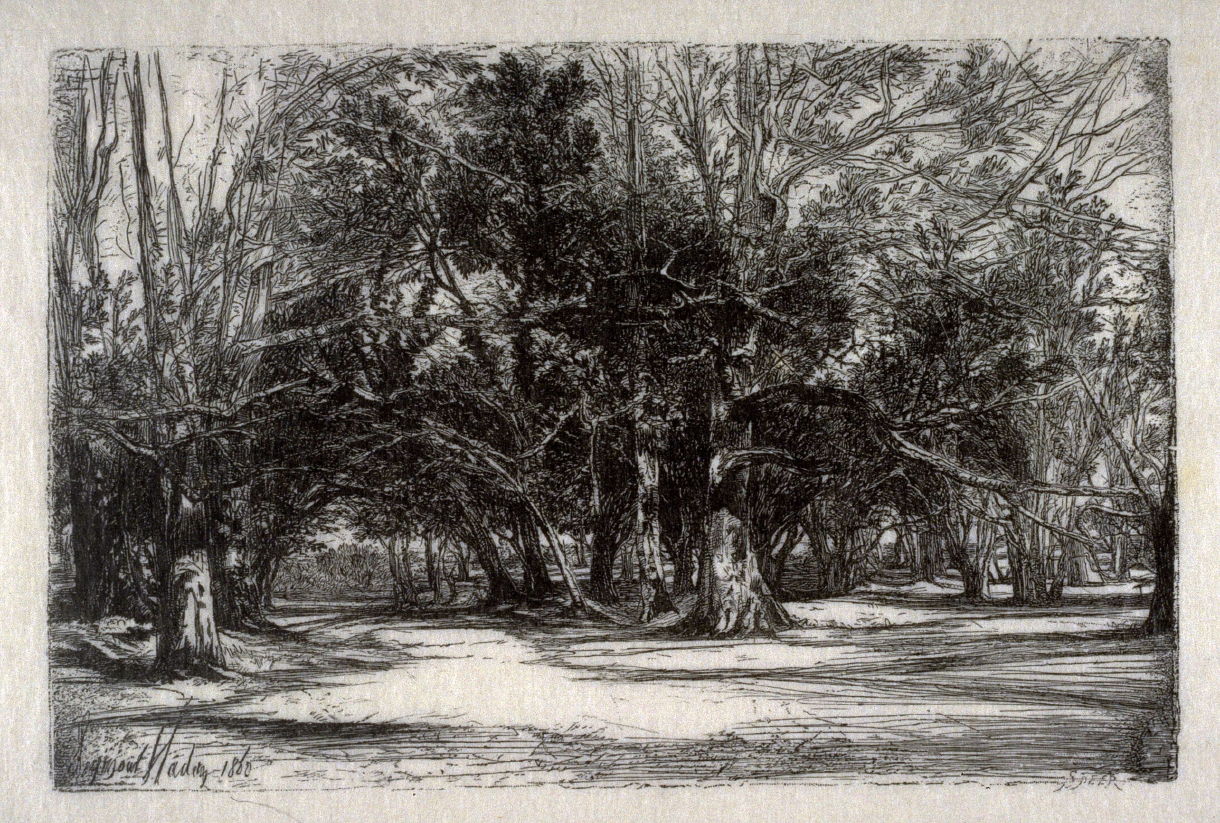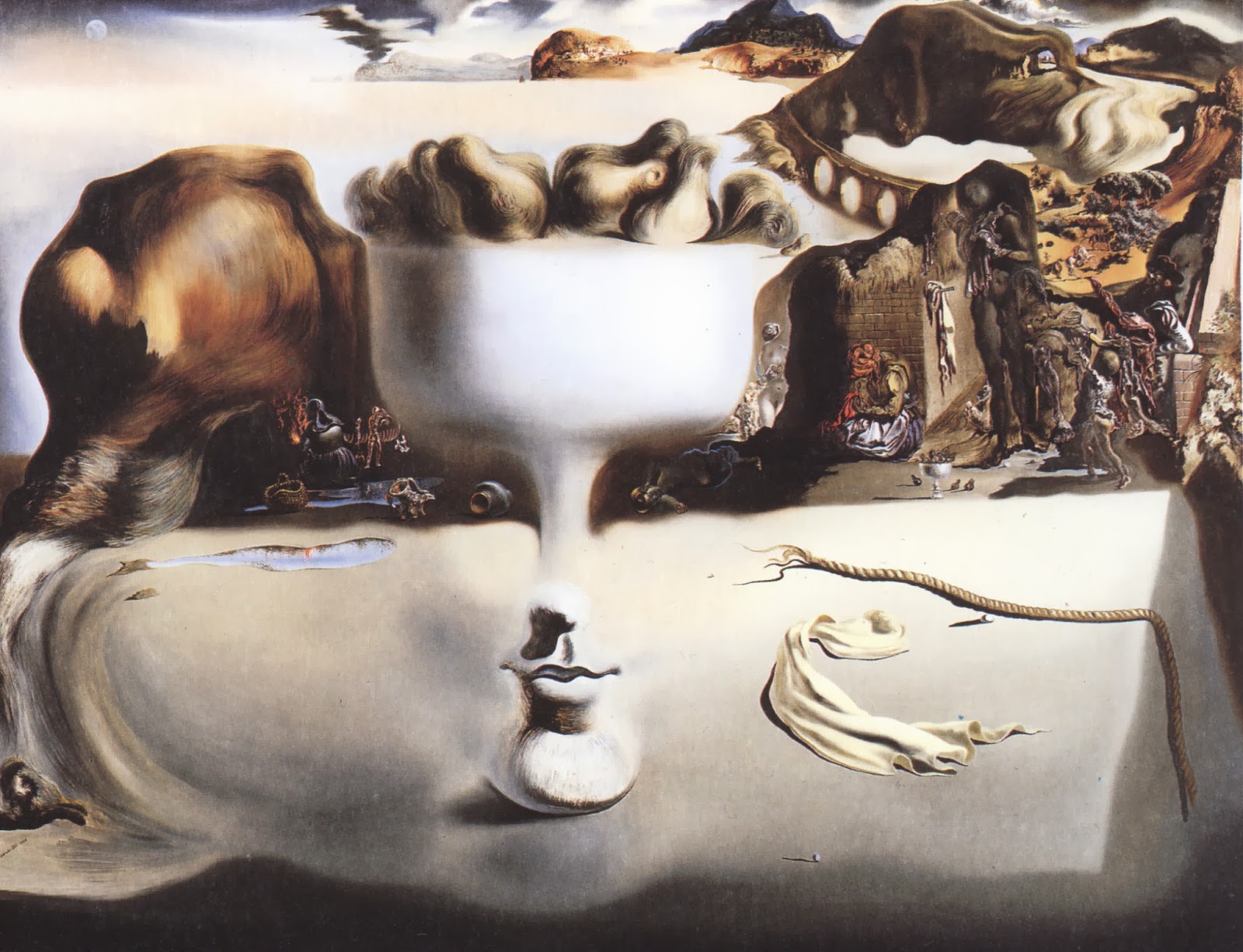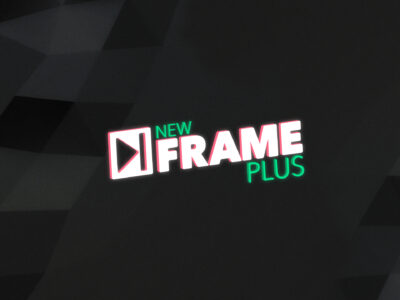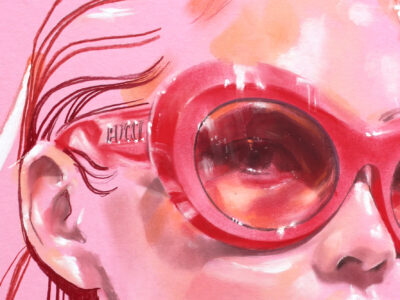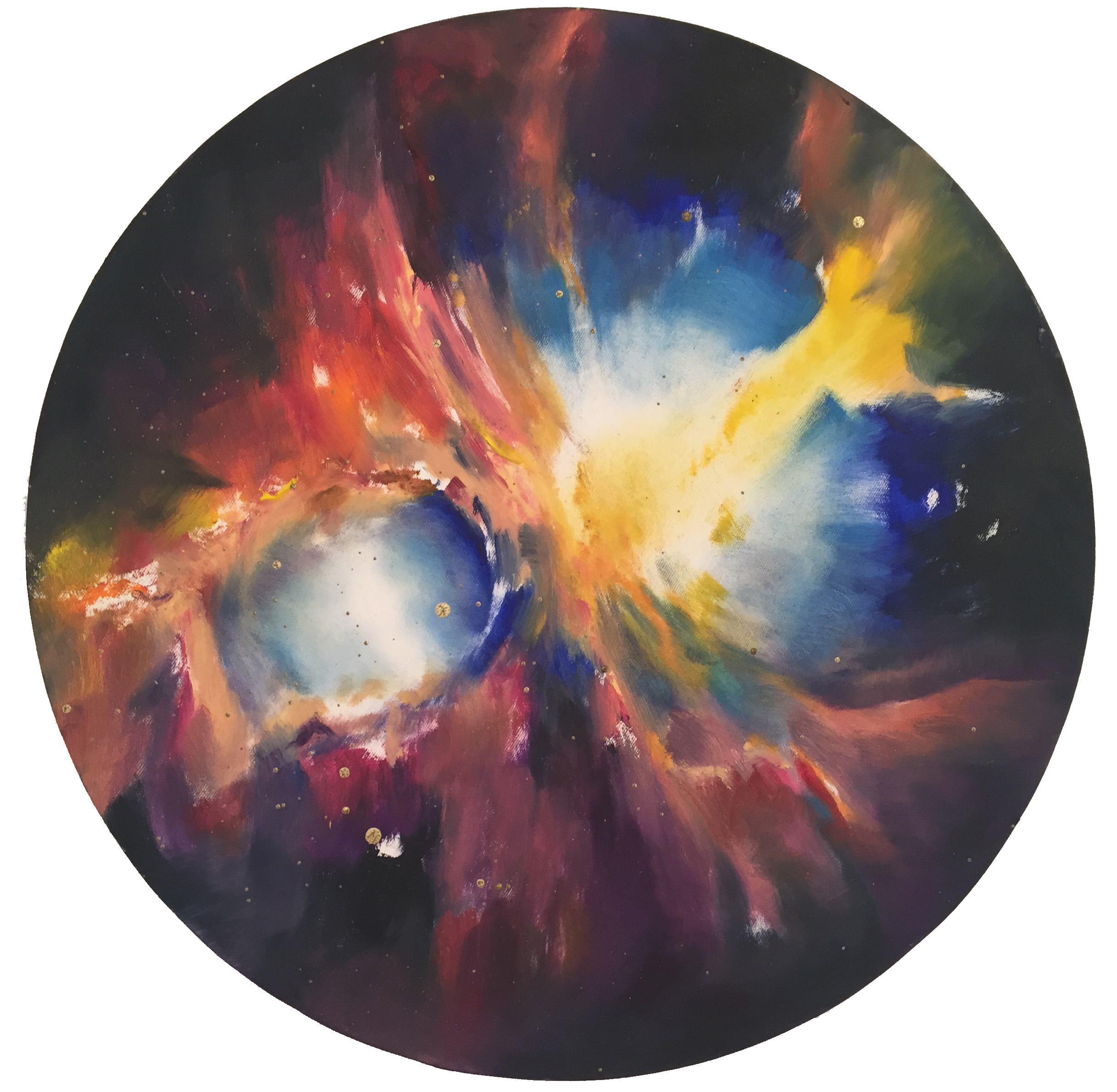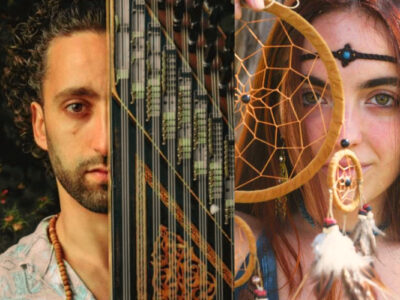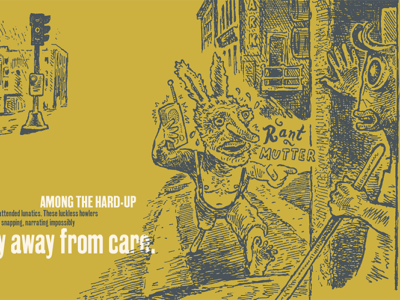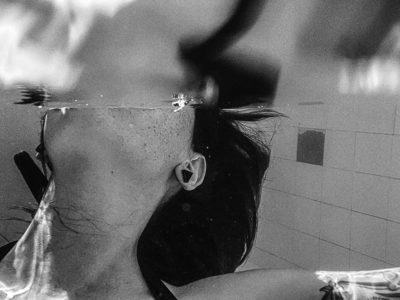Entrevistamos a artista e ilustradora italiana Simona Dimitri, que nos conta de onde surge a sua arte, sempre ligada à transformação interior e à conexão com a natureza e com a totalidade dos seres vivos. Clique e conheça, vale a pena.
“Temos que colocar os nossos olhos na mesma linha dos olhos do outro. Para olhar um pequeno inseto, não posso fazê-lo senão colocando a minha cara no chão, mas pode ser também interessante ficar no chão para ver uma vaca. Aprender a ser uma coisa pequena.”
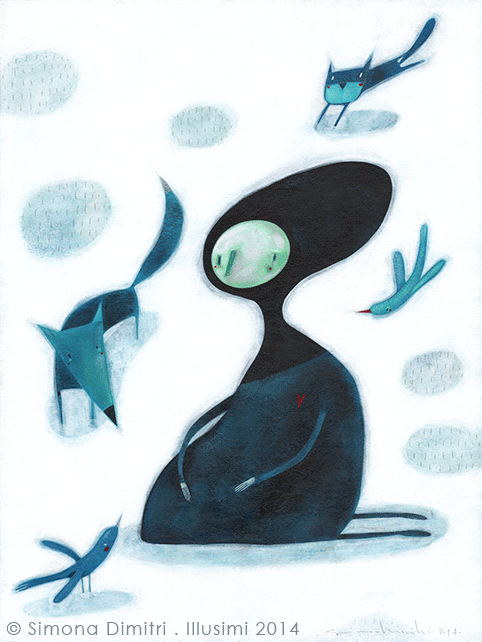
- Como, onde, quando e por quê?
A história começa na escola, eu acho. Eu gostava de desenhar, então frequentei a Escola de Artes e depois uma Escola de Ilustração em Milão. Mas tenho que falar que quando estava na escola, nunc me senti livre para expressar algo meu no papel. Eu não sei o porquê e não tinha consciência disso, até que me vi fora da escola e dando os primeiros passos no mundo. Me senti completamente diferente, e comecei a buscar o meu próprio caminho, experimentando diferentes técnicas e modos de expressão, com muitas tentativas alegres e (mais) resultados ruins!
Participei de algumas competições internacionais, e às vezes meus trabalhos eram selecionados para as exibições finais, e enquanto isso eu trabalhei com publicidade e pude colaborar pelas primeiras vezes com editores, primeiro por conta própria e depois com uma agência. Naquele período eu queria absolutamente ser uma ilustradora de livros infantis, e no final eu consegui, mais ou menos, embora agora essa não seja mais a minha ocupação favorita. Talvez porque eu novamente tenha deixado de me sentir livre fazendo-o. Eu preciso me expressar nos meus desenhos, e o único modo que encontrei para fazê-lo é trabalhando como pintora para vender meus trabalhos originais. Isso é o que eu amo, e apenas nesses pedaços de papel ou papelão você pode encontrar o que eu realmente sou e sinto.
- Por que você faz o que faz?
Eu acho que já respondi a sua segunda pergunta; eu faço o que faço porque gosto! Porque eu sinto a necessidade de contar algo, mas sem palavras. Acontece que as palavras são mal entendidas. Parece absurdo, mas não é, porque temos algum mecanismo que nos faz julgar as coisas como certas ou erradas, e às vezes o fazemos com todo o nosso preconceito, o que nos impossibilita de capturar a mensagem. É como se algumas palavras fossem paradas numa “barreira defensiva” nos portões da nossa mente, antes mesmo que as ouçamos, sem possibilidade de sermos tocados por elas. Com imagens é realmente diferente. Eu posso colocar no meu lápis e nas minhas cores pequenas nuances dos meus pensamentos, numa maneira tão imperceptível, sem formatos tão fortes ou recortados como as palavras às vezes possuem. E assim a mensagem tem uma chance maior de ser percebida. Uma mensagem não-verbal pode passar pelas barreiras dos nossos esquemas e chegar diretamente à percepção da mente, de um jeito consciente ou não.
- O que você costuma ouvir sobre o seu trabalho?
Não muito, devo confessar. Alguns anos atrás eu tinha um atelier na Itália. Era um lugar onde as pessoas podiam vir e me visitar enquanto eu trabalhava. Foi uma experiência muito boa, porque eu tive um bom contato com as pessoas e eu me lembro de perguntar a elas o que viam num desenho, e o que uma determinada pintura trazia às suas mentes. Era muito interessante para mim, e às vezes era até extraordinário descobrir uma visão completamente diferente a respeito dos meus próprios desenhos. Lembro-me de uma ocasião em que minhas pinturas foram completamente mal entendidas. Foi há uns anos. Um blog publicou um post sobre meus trabalhos, que eram apresentados de uma maneira bastante gentil e poética. Mas os leitores não os apreciaram o que eu fazia, que foi considerado em comentários como um modo muito açucarado e superficial de se fazer arte. Talvez não fosse o lugar certo para mim… Eu pensei que eles simplesmente não tinham entendido o meu pensamento. Hoje não mudei muito a minha opinião sobre o caso, mas desde então o meu desenho e minha pintura mudaram muito, e agora entendo melhor que no passado meus trabalhos não eram muito claros em suas mensagens (escondidas demais!) e, talvez, fossem mais facilmente incompreendidos. Meu desenho mudou e o que eu quero dizer também mudou. Claro, no fim das contas todos nós estamos em transformação constante… Eu espero de qualquer modo que o meu pensamento possa fluir mais suavemente agora e no futuro.
- Quem são seus personagens? De onde eles vieram?
… que pergunta difícil!!! Entre os meus personagens estão vários animais diferentes, e entre eles uma outra criatura estranha, um tipo de ser humano alado, com asas que trazem-no de volta em outro tipo de relação com os outros seres. Em poucas palavras, o que eu gostaria de representar, especialmente nesses últimos anos, é nada mais que a realidade da nossa natureza enquanto seres vivos, o que não é facilmente visto pelo nosso olhar rápido mas não tão atento. Nós somos seres vivos, unificados um com o outro, seres animais e vegetais, feitos pelo mesmo material, a mesma vida. Sentir essa conexão significa mudar completamente o nosso ponto de vista. Nos meus desenhos eu tento fazer visível o que é invisível aos olhos, mas pode ser percebido pelos outros sentidos. Assim, nesse ânimo, todas as relações com o mundo são diferentes, as relações com outras criaturas são diferentes. Não há seres humanos que observam o resto da Natureza de um ponto de vista distante e mais elevado. Há apenas seres vivos conectados pela mesma vitalidade. Eu tento dizer isso com uma relação diferente de proporções entre as criaturas. Por exemplo, o ser humanos é geralmente uma criatura pequena se comparado a outros animais. Ele está num tipo de equilíbrio com os outros, e parece ser capaz de usar uma linguagem muda – ou simplesmente diferente – para “falar” com os outros, tal como eles o fazem. Nós não podemos ter um diálogo real enquanto estivermos sobre um banquinho, eu acho. Temos que colocar os nossos olhos na mesma linha dos olhos do outro. Para olhar um pequeno inseto, não posso fazê-lo senão colocando a minha cara no chão, mas pode ser também interessante ficar no chão para ver uma vaca. Aprender a ser uma coisa pequena.
- Qual é o seu processo, da criação à publicação?
O que eu faço para editores é uma coisa completamente diferente, como indiquei antes. No meu caso eu só faço com as cores o que outras pessoas escreveram e desenharam com muito cuidado. Eles têm as suas necessidades, isso é mais do que compreensível, e eu só trabalho para que seus projetos se tornem realidade. Para todos os outros tipos de trabalhos, não é um caso de um processo destinado à publicação, porque não é o seu propósito na maioria das vezes.
A respeito desses outros, a jornada da mente para o trabalho final pode ser tanto muito fácil ou muito complexa. Às vezes eu faço muitos esboços, às vezes vou direto ao papel para aquarela ou o papelão. Às vezes esboços velhos e esquecidos voltam a viver quando é surge o momento certo. É muito importante para mim sentir exatamente o que eu tenho em mente para produzir, porque quando me sinto assim, tenho mais possibilidades de transmitir o sentimento ao papel, e talvez o desenho conserve essa vitalidade.
- Você trabalha com muitos materiais diferentes. Fale sobre as suas preferências (e sobre o uso da cor vermelha, que parece ter um significado especial para você).
O material é uma questão de momento, um tipo de escolha instintiva. Nesse momento eu penso no que tenho em mente e se é adequado para ser expressado nesse ou naquele jeito. Há mais ou menos três tipos de materiais que eu amo usar: as aquarelas, um combinado de caneta, papelão e cor branca, e também as tintas acrílicas em papelão ou um painel mais pesado.
Você me perguntou sobre a cor vermelha… Às vezes a cor vermelha é simplesmente um jeito de trazer a atenção para uma coisa em particular, em maio às outras. Às vezes é apenas para dar o equilíbrio cromático. Às vezes a cor vermelha é a vida pulsante, o impulso vital. Às vezes é o meio de conexão entre diferentes sujeitos, como um pequeno fio. Não é fácil dizer. Às vezes não estou tão consciente de minhas escolhas, e acabo descobrindo depois algo que, quando eu as produzi, não era claro para mim mesma! Enfim, há cores pelas quais eu tenho um sentimento particular – o vermelho é uma delas – e há também o branco, a não-cor, pela qual eu sinto uma fascinação muito profunda.
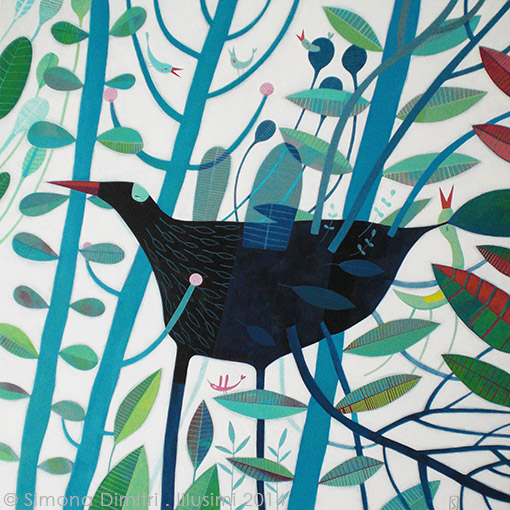
- Como a literatura, a música, as artes e os quadrinhos se relacionam com o seu trabalho?
Livros, arte, e outras formas de comunicação que eu – como todos nós – absorvemos incessantemente através de cada poro de nossa pele têm, com certeza, suas influências. Na maior parte do tempo, na minha opinião, acontece de uma maneira inconsciente, como algo que se agarra nas células do nosso cérebro, sem que a gente queira. Eu me lembro de vezes em que queria traduzir um pedaço de música em imagens, mas naqueles casos o link entre essas coisas era provavelmente apenas uma ideia minha. Em outras vezes havia uma sentença ou um trecho muito pequeno de algum livro que criaria instantaneamente uma imagem na minha mente, uma visão maravilhosa, muito forte e viva, e para mim sempre foi muito difícil, nesses casos, reproduzir esse vislumbre da mente no papel, porque o vislumbre era a mesmo tempo muito claro e muito indefinido.
- Conte um pouco sobre o seu trabalho de escrita e aquarela. Qual é a sensação de pintar textos e transformá-los em composições visuais?
Eu sinto uma atração muito forte pelo letramento. Amo as formas das letras, e também a caligrafia, embora eu nunca tenha feito caligrafia propriamente (não me sinto muito familiarizada com esse tipo de disciplina forçada, embora eu ame ver as pessoas fazendo-o, é fascinante!). Eu amo escrever à mão em meus cadernos, mais do que em computadores ou outro aparelho. Desse substrato nascem meus trabalhos feitos de escrita, com pequenos pauzinhos e aquarelas. Eu gosto de mergulhar as varetas na aquarela e ver a gota de água colorida seguir o caminho da vareta ao papel, e talvez juntar uma gota mais de outra cor naquela, para ver no que dá. Essa é a mágica das aquarelas unidas ao fascinante gesto da escrita. Isso é algo que está entre a regra e a liberdade de cada forma.
- Quais são seus projetos futuros?
Sobre o futuro… Eu pretendo começar algumas colaborações, algo similar à minha longa colaboração com a Milonga em Milão, que é um lugar maravilhoso onde meus trabalhos estão em exposição para venda, entre muitos outros artistas muito interessantes. E também tenho que terminar um projeto de um pequeno livro, que está pronto – para falar a verdade – mas eu apenas preciso tomar as decisões finais sobre como apresentá-lo em seu formato final. Eu estou ansiosa para fazer isso e dizer “uh, esse é o livro, por fim!” porque já passou por um longo período de incubação!
- Maiores influências e heróis?
Como eu disse, a respeito de livros e artes em geral, não posso dizer algo em particular sobre as minhas influências. Há muitas coisas e pessoas, de pintores a ilustradores, fotógrafos, escritores, músicos… Eu não tenho um herói, mas uma pilha inacreditavelmente grande de pessoas e trabalhos que eu aprecio! Todos esses fragmentos juntos vão e formam um tipo de massa de onde vem, talvez, o que eu faço.
- Algo que você sempre quis responder e nunca te perguntaram?
Uh! Não há nada disso, eu acho, porque eu geralmente prefiro não falar muito, deixando aos meus desenhos a tarefa de falarem por si mesmos. Eu espero que eles façam isso melhor do que eu!
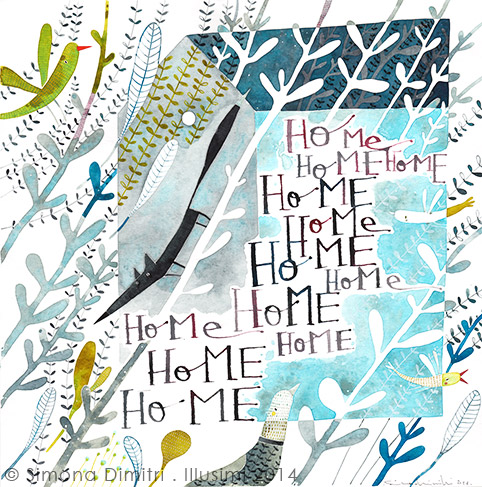
Mais em:
https://www.illusimi.com/
English Version
- How, where, when and why.
The story begins at school, I think, I liked to draw, so I attended the Artistic School and then an Illustration School in Milano. But I have to tell you that when I was at school I never felt myself free to express something mine on the paper. I don’t know why and I was not conscious of that, until I have found myself outside the school walls, and I began to move my first steps in the world. I felt myself completely different, and I started to searching for my way, experiencing different techniques and ways of expression, with a lot of happy attempts and (more) bad results!
I took part in some International competitions and sometimes my artworks were selected for the final exhibitions, and in the meantime I worked for advertising and I had my first little collaborations with publishers, by myself in the beginning, and then with an agency. In that period I absolutely wanted to be an illustrator for children books and in the end I did it, more or less, but now this is not anymore my favorite occupation. Maybe because again I feel not free, doing this. I need to express myself in my drawings and the sole way that I found for doing it is working as a painter and sell my original artworks. This is what I love, and only in those pieces of paper or cardboard you can find what really I am and feel.
- Why do you do what you do?
And so doing, I think I have already answered to your second question, I do what I do because I like it! Because I feel the need to tell something but not through words. It happens that the words are misunderstood, it’s seems absurd, but it isn’t, because we have some mechanism that bring us to judge things as right or wrong, and sometimes we do so with all our prejudice that makes ourselves unable to catch the message. It is as some words are stopped from a sort of “defensive barrier” at the gate of our mind, even before to be listened, with no possibilities then for us to be touched by them. With images it is really different. I can put in my pencil and colors every tiny nuances of my thoughts, in a so imperceptible way, without so strong and edgy shapes as words sometimes have. And so the message have a chance more to be perceived. A nonverbal message can pass through the barriers of our schemes and directly arrive to the perception of the mind, gently, in a conscious or also unconscious way.
- What do you usually hear about your work?
Not too much, I have to say. Some years ago I had an atelier in Italy, it was a place where people could come and visit me while I was at work. It was a very nice experience because I have had a good contact with people and I remember I liked to ask them what they see in a drawing, and what a certain painting brings them to think. It was very interesting for me, and sometimes it was even something extraordinary to discover a completely different view about my own drawings. While I remember an occasion in which my paintings were completely misunderstood. It was some years ago, a blog published a post about my works, they were presented in a very kind and poetic way, but the audience did not appreciate them, and they were commented as a too sugary and shallow way of doing art. Maybe it was not the right place for me.. I thought that they simply didn’t understand my thought. Now I haven’t changed very much my opinion about that case, but in the meantime my drawing and painting are changed a lot and now I understand better that in the past my artworks were not so clear in their (too hidden!) messages and, maybe, more easily misunderstood. My drawing is changed and also what I want to say is changed, of course, all of us are in a constant transformation after all… I hope anyway that my thought could flow more smoothly now and in the future.
- Who are your characters? Where did they come from?
.. such a difficult question!!! Among my characters there are a lot of different animals and among them another strange creature, a kind of winged human being, those wings that bring him back in another kind of relationship with the other beings. In few words, what I would like to represent, especially in this last years, is nothing more than the reality of our nature of living beings, what is not very easily visible to our quick and not so attentive glimpse. We living beings, melted one another, vegetal and animal beings, made by the same material, the same life. To feel this connection means completely changing our point of view. In my drawings I try to make visible what is invisible to the eyes, but it’s perceivable from our other senses. Therefore, in this mood, all the relationships with the world are different, the relationships with other creatures are different, there are no human beings that observe the rest of the Nature from a distant and higher point of view. There are just different living beings connected from the same living sap. I try to say so with a different relation of proportions among the creatures, for example the human being is often a tiny creature compared with other animals, he is in a sort of balance with others, and it seems able to use a kind of mute – or anyway different – language to “speak” with others, as others do. We can’t have a real dialogue if we stand on a footstool, I think. We have to put our eyes on the same line of the eyes of the other. To look at a tiny insect, I can’t help but put my face on the ground, but it could be also useful staying on the ground and look at a cow, learn to be a little thing.
- What is your process, from creating to publishing?
What I do for publishers it’s a completely different thing, as I hinted before, in my case I just do with colors what other people very carefully wrote and designed. They have their needs, and it is more than comprehensible, and I only work to make real their projects. For all the other kind of artworks it’s not a matter of a process aimed to publishing, because it is not their purpose, in most of the cases.
About these others, the journey from the mind to the final artworks could be as well very easy or very complex, sometimes I did a lot of sketches, sometimes I go straight on my watercolor paper, or cardboard. Sometimes old and forgotten sketches come back to live just when it is their right moment. Very important for me, is to feel exactly what I have in mind to do, because if I feel it then I will have more possibility to convey the feeling on the paper, and maybe the drawing will conserve this vitality.
- You do work with lots of different materials. Tell us about your preferences (and about the red color, which seems to have an important meaning to you).
The material is a matter of the moment, it’s a kind of instinctive choice. In that very moment I think that what I have in mind is more suitable for being expressed in this or this other way. There are more or less three kinds of materials that I love to use, and they are watercolors, a mixed media made with pen, cardboard and the color white, and then the acrylic colors on cardboard or heavier panel. You ask me about the red color… Sometimes red color is simply a way to bring attention on a particular thing among the others. Sometime it’s just a matter of chromatic equilibrium. Sometimes red color is the pulsing life, the vital push. Sometimes it is a connecting medium among different subjects, something like a same thin wire. It’s not so easy to say, sometimes I am not so conscious about my choices, and it happens to discover later something that, when I did it, was not very clear to myself! Anyway, there are colors for which I have some particular feeling – red is one of them – and then there’s the white, the non-color, for which I feel a very deep fascination.
- How do literature, music, arts and comics relate to your work?
Books, art, and other form of communication that I – as all of us – incessantly absorb from every pore of the skin have of course their influence. Most of the time, in my opinion, it happens in an unconscious way, as something that clings at our brain cells, also without our will. While I remember that sometimes I wanted to translate a piece of music into images, but in those cases the link between them probably was just a idea of mine. Some other times there has been a sentence or a very little piece of a certain book that instantly produced a image in my mind, such a wonderful view, something very strong and vivid, but it has been always very hard in such cases to reproduce that glimpse of mind on the paper, because that glimpse was at the same time very clear and very undefined.
- Tell us a about your work with writing and watercolor. What’s the feeling of painting texts and transforming them into visual compositions?
I feel a very strong attraction for lettering. I love the shapes of letters, I love also the handwriting, though I never did calligraphy as it is usually considered (I feel not very familiar with that kind of forced discipline, though I love to see people doing it, it’s very fascinating!). I love write by hand in my notebooks, more than to use a computer or other technological devices. From that substrate are born my artworks made of handwriting with little sticks and watercolors. I like to dip the stick into the watercolor, and see the drop of watery color follow the way of the stick on the paper, and then maybe add a pinch of another color in that drop, and wait for the result. This is the magic of the watercolors together with the fascinating gesture of writing, that is something in between the rule and the freedom of each shape.
- What are your future projects?
About the future, I have in mind to start few new collaborations, something similar to my long-standing collaboration with Milonga in Milano, which is a wonderful place where my artworks are exposed for sale, among a lot of other very interesting artists. And then I have to bring to an end a project for a little book, which is ready – to tell the truth – but I have to take just the last decisions about how to present it in its final shape. I look forward to do it and say “ouh, this is the book in the end!” because it already has had a long period of incubation!
- Greatest influences and heroes?
As I told you about books and arts in general, I can’t tell something particular about my influences. There’s a lot of things, and people, from painters to illustrators, photographers, writers, musicians… I don’t have a hero, but an incredible huge pile of people and works that I appreciate! And all these fragments together go to form a sort of dough from which comes from, maybe, what I do.
- Anything you always wanted to answer and nobody ever asked you?
Ouh! There’s no such a thing, I think, because I usually prefer to speak not too much, leaving instead to my drawings the task to speak for themselves. I hope they will do it better than me!


